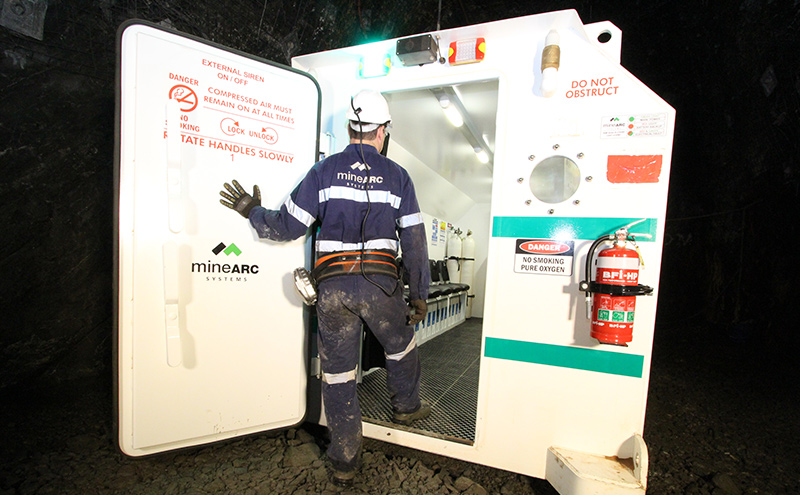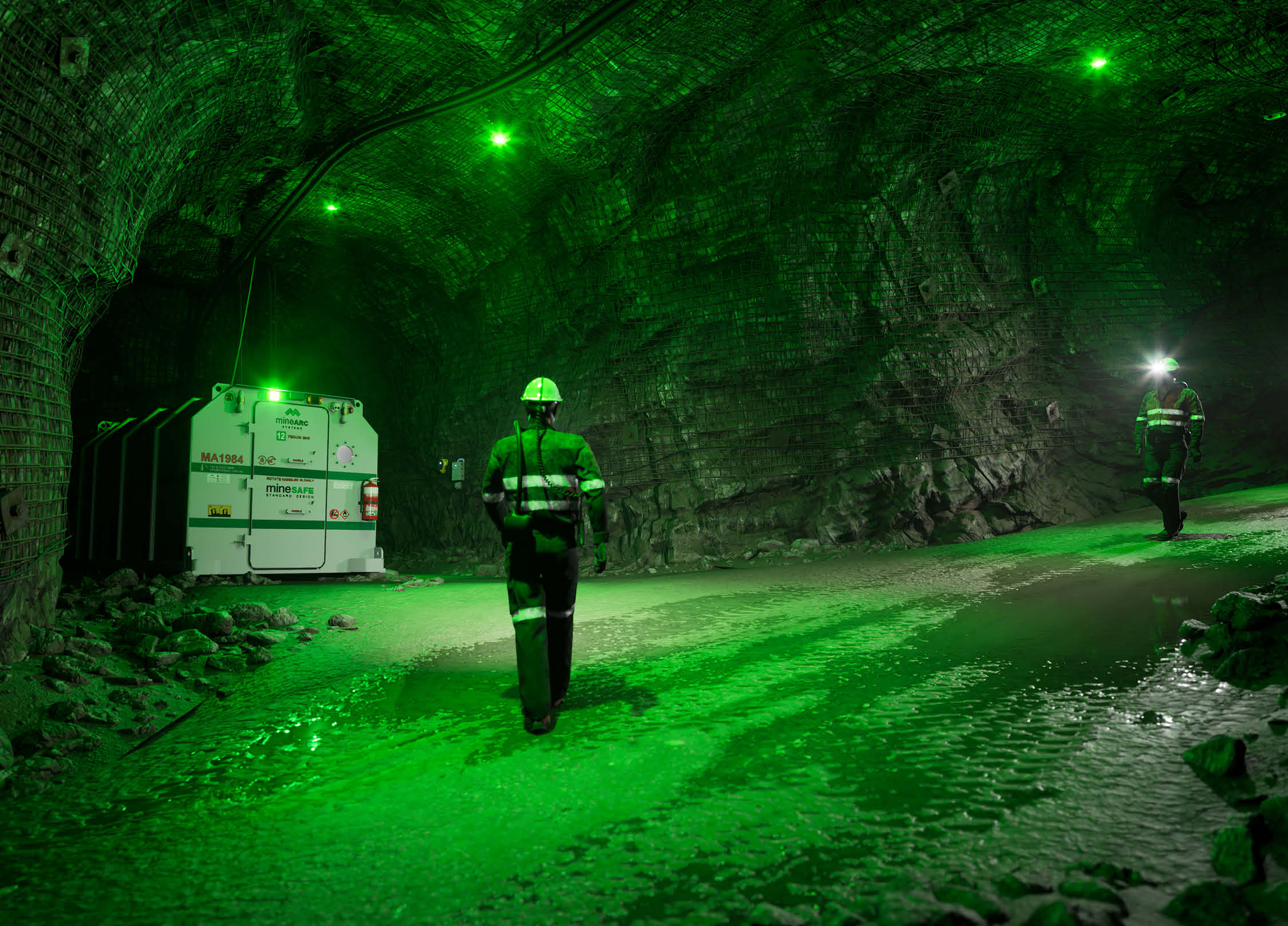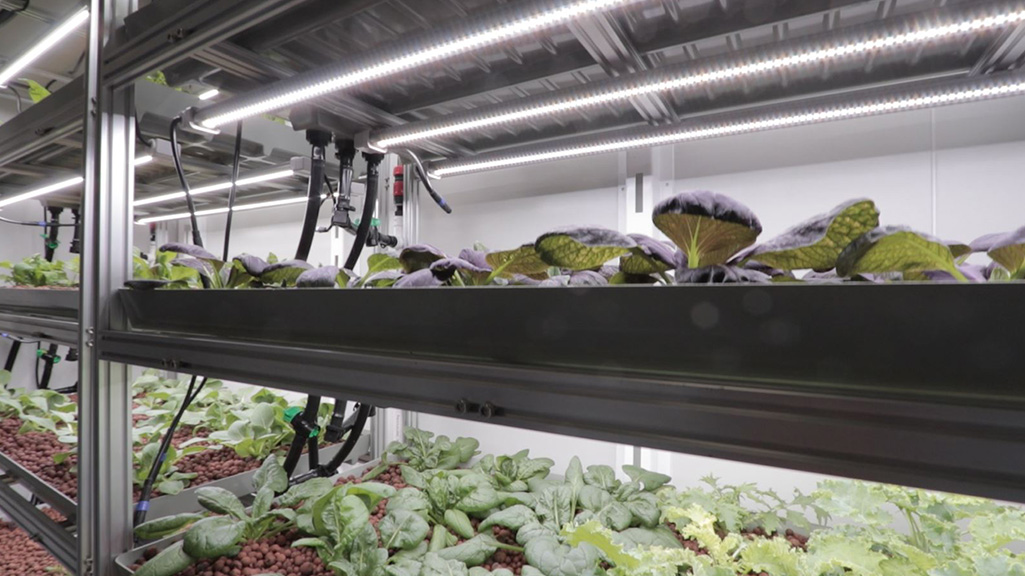Maintaining positive pressure inside a refuge chamber is extremely important. Positive pressure helps to prevent the ingress of airborne contaminants, such as smoke or toxic gases, from entering. If contaminants enter, they can compromise the breathable atmosphere for occupants.
Pressure systems form part of a refuge chamber’s life support systems providing a safe, breathable atmosphere for occupants.
Positive pressure is typically reached through compressed air use. Compressed air is fed into the shelter until the internal pressure reaches 200 Pascals (Pa). Check valves control positive internal pressure; opening should the pressure inside exceed 250Pa. Too much positive pressure will prevent the chamber door from opening or risk damaging the chamber.
If a compressed air source is not connected, venting compressed air cylinders directly into the refuge station help reach the required positive pressure.
The amount of air needed to reach the necessary level of positive pressure is determined by internal chamber volume and the relationship between the internal and external atmospheric temperatures. It is not sufficient to set an arbitrary pressure as a target for internal chamber pressure. A fixed value inside the chamber cannot be assumed to be positive relative to the external air pressure.
How to Reach Positive Internal Pressure?
Positive pressure is typically reached through compressed air use. Compressed air is fed into the shelter until the internal pressure reaches 200 Pascals (Pa). Check valves control positive internal pressure; opening should the pressure inside exceed 250Pa. Too much positive pressure will prevent the chamber door from opening or risk damaging the chamber.
If a compressed air source is not connected, venting compressed air cylinders directly into the refuge station help reach the required positive pressure.
The amount of air needed to reach the necessary level of positive pressure is determined by internal chamber volume and the relationship between the internal and external atmospheric temperatures. It is not sufficient to set an arbitrary pressure as a target for internal chamber pressure. A fixed value inside the chamber cannot be assumed to be positive relative to the external air pressure.
Pressure System Components for Refuge Chambers
The positive pressure system requires a 24 volt DC power source and comprises the following components:
- Compressed Air Cylinder(s) and Regulator – These provide the compressed air required to obtain and maintain positive pressure inside the refuge chamber. The air in the cylinder typically is pressurised to 15000-20000kPa. The regulator controls the pressure of the gas exiting the cylinder.
- Adjustable Differential Pressure Switch – The differential pressure switch is a device that measures the difference in pressure between two sources. When the difference falls above or below a specific range, the switch will either open or close electrical contacts.
- Solenoid Valve – The solenoid valve controls the release of the compressed air into the refuge chamber. It operates via an electromagnet. When power is applied to the coil, the valve will open.
How Refuge Station Positive Pressure Systems Operate
Upon initial entry into the refuge chamber, the pressure inside and outside the shelter will be equal.
Switching on the scrubber blower provides power to the positive pressure system. The solenoid valve will then open, allowing compressed air to flow into the chamber until the internal pressure reaches 200Pa above the outside pressure. The switch will then open, cutting power to the solenoid and therefore shutting off the compressed air supply.
Suppose the inside pressure drops below approximately 170Pa above outside pressure. In that case, the switch will re-close, sending power back to the solenoid and allowing compressed air into the refuge chamber, again shutting off at 200Pa positive pressure.
This process will repeat until the supply of compressed air is exhausted.
Types of Positive Pressure Systems
Pressure systems help maintain a safe, breathable atmosphere within the refuge chamber.
These systems include;
- A Compressed Air Management System (CAMS) to regulate the release of compressed air into the refuge chamber;
- A Pressurised Access Safety System (PASS) to ensure safe entry into the refuge chamber;
- A Positive Pressure Maintenance System (PPMS) to maintain positive internal pressure within the refuge chamber
Compressed Air Management System (CAMS)
CAMS contains a differential air pressure sensor and a shut-off valve allowing airflow into the chamber to be regulated, automatically emitting periodic ‘bursts’ of compressed air into the refuge chamber when the pressure inside drops below 200Pa. This process optimises mine air usage and guarantees against over-pressurisation of the refuge chamber. CAMS maintains a positive pressure ‘seal’, ensuring contaminants cannot enter the refuge chamber from the outside.
CAMS Electrical Controller
The electronic controller of CAMS performs a number of functions, depending on the mode of operation; chamber occupied and chamber non-occupied.
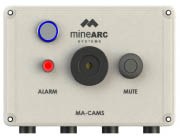
Occupied Mode: The chamber requires a constant stream of air as its primary source of breathable air. While in occupied mode, the incoming compressed air is constantly monitored for quality by an oxygen sensor. If the level of oxygen drops below 18%, indicating contamination with smoke or other gases, the system will go into alarm and shut off the compressed air supply until such time as the oxygen levels go back above 18%.
Unoccupied Mode: Its main function is to keep the chamber positively pressurised. Using a differential pressure sensor to switch off the flow of compressed air when the chamber reaches 200Pa above ambient pressure reduces compressed air usage by as much as 95%, while still maintaining protection against the ingress of smoke and other contaminants into the refuge chamber.
Pressurised Access Safety System (PASS)
Pressurised Access Safety System (PASS) remote activation unit is located next to the door on the chamber’s front exterior, allowing personnel to pre-prepare for safe entry.
Should the refuge chamber’s fresh compressed air supply become disconnected or compromised, the system’s external LED light will display red, indicating that the chamber is not positively pressurised and therefore unsafe for entry.
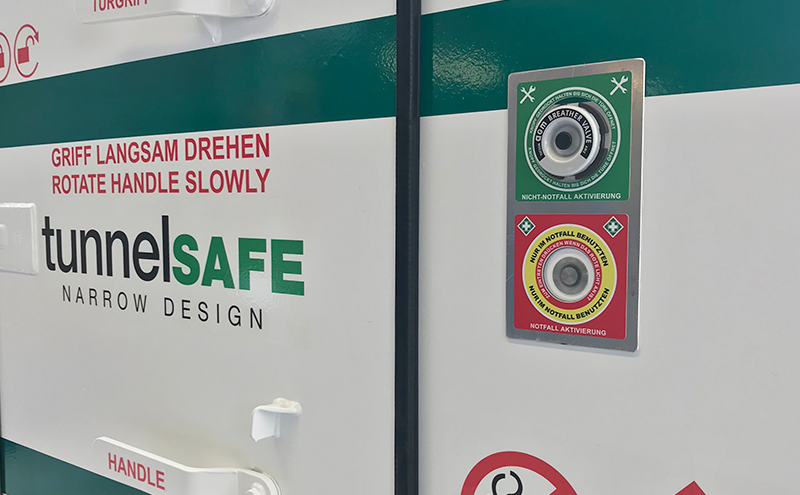
Once activated, the PASS will disperse controlled quantities of compressed air into the chamber until the internal pressure reaches 200Pa. By ensuring that the pressure inside the refuge is slightly greater than outside, toxic contaminants are prevented from infiltrating the chamber during personnel entry.
Positive Pressure Maintenance System (PPMS)
A Positive Pressure Maintenance System (PPMS) is securely mounted to the interior wall of the refuge chamber. Powered by a 24VDC power supply, the electric solenoid valve opens and closes to release measured amounts of breathable air from compressed air cylinders to maintain positive internal pressure.
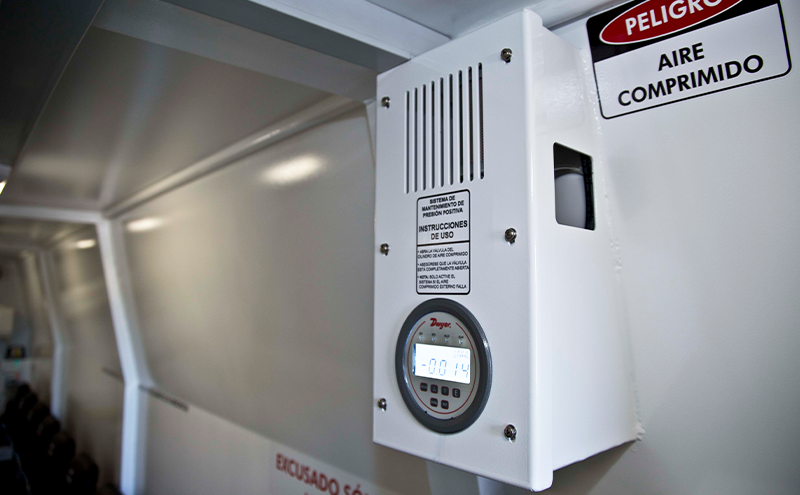
Once activated, the PASS will disperse controlled quantities of compressed air into the chamber until the internal pressure reaches 200Pa. By ensuring that the pressure inside the refuge is slightly greater than outside, toxic contaminants are prevented from infiltrating the chamber during personnel entry.



